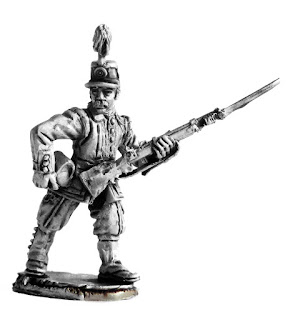Just over 150 years ago the call for volunteers to fight for the Pope against the army of King Victor Emanuel and his war for the unification (Risorgimento) of Italy was made in the chapels all across Ireland with over 1000 men answering the call.
Many were farm labourers, with little or no military experience, while a few had served in the British Army or were men of the Royal Irish Constabulary.
Travel to Italy was made difficult for these volunteers due to the Foreign Enlistment Act which forbade British subjects to enlist in foreign armies. Travelling my circuitous route using numerous excuses and reasons, such as pilgrimage and work, they made their way to the Holy See. The first to arrive were received personally by Pope Pious IX.
Lots of promises were made in the Masses in Ireland: that they would serve as a single Irish Brigade commanded by Irish officers and that that they would be well armed and equipped for their crusade. The reality proved very different with them being poorly equipped and armed and serving as smaller units attached to the volunteer units of France, Italy, Switzerland, Austria and Germany.
When war broke out in September 20th 1860 with the hostilities only lasting 18 days as the Papal Army was no match for the forces of the Risorgimento. The Irish did see action at the battles of Perugia, Spoleto, Castelfidardo and Ancona and were, as one would expect, well regarded as fighting men.
With defeat came capture and deportation back to Ireland were they were received at the docks of Queenstown, on the 3rd November 1860, as heroes as bands played and crowds cheered their arrival. The tailors of Cork made a thousand tweed suits that were given to the volunteers to replace their worn uniforms.
For some that was not the end of the story as they would cross the Atlantic to fight in the Irish Brigades of the Union Army during the War Between the States. Its most famous veteran was the dashing Myles Keogh who would fight and die alongside Colonel Custer at the Little Big Horn whilst in command of the I Company of the 7th Cavalry.
For more information on these and other miniatures in our range click HERE
Travel to Italy was made difficult for these volunteers due to the Foreign Enlistment Act which forbade British subjects to enlist in foreign armies. Travelling my circuitous route using numerous excuses and reasons, such as pilgrimage and work, they made their way to the Holy See. The first to arrive were received personally by Pope Pious IX.
Lots of promises were made in the Masses in Ireland: that they would serve as a single Irish Brigade commanded by Irish officers and that that they would be well armed and equipped for their crusade. The reality proved very different with them being poorly equipped and armed and serving as smaller units attached to the volunteer units of France, Italy, Switzerland, Austria and Germany.
When war broke out in September 20th 1860 with the hostilities only lasting 18 days as the Papal Army was no match for the forces of the Risorgimento. The Irish did see action at the battles of Perugia, Spoleto, Castelfidardo and Ancona and were, as one would expect, well regarded as fighting men.
With defeat came capture and deportation back to Ireland were they were received at the docks of Queenstown, on the 3rd November 1860, as heroes as bands played and crowds cheered their arrival. The tailors of Cork made a thousand tweed suits that were given to the volunteers to replace their worn uniforms.
For some that was not the end of the story as they would cross the Atlantic to fight in the Irish Brigades of the Union Army during the War Between the States. Its most famous veteran was the dashing Myles Keogh who would fight and die alongside Colonel Custer at the Little Big Horn whilst in command of the I Company of the 7th Cavalry.
For more information on these and other miniatures in our range click HERE





